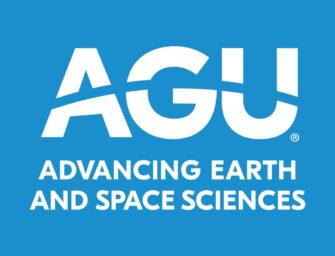AGU Publications, Continuing to Lead
Over the past several years, AGU has continually evolved its publishing program for both journals and books. Some of the evolution has been incremental, such as adding commentaries and social media sites for certain journals, some has been more consequential, such a instituting a 24-month rolling embargo for all journal content published after 1997, and some has been in response to changes in science, such as the launch of two new journals, Earth’s Future and Earth and Space Science, and the start of special collections, including celebrating the 40th and 50th anniversaries of Geophysical Research Letters and Water Resources Research, respectively. Much of that evolution began in 2013 when AGU undertook a major operational shift by partnering with Wiley.
So, more than three years after the beginning of this evolution, you might ask, “How well is it working? Here are a few of the key results:
Submissions grew 16% in 2015 (to a total of 13,021), and year-to-date submissions are up an additional 8% in 2016 (to a total of 8,192 through 31 July 2016.
Impact factors remain strong and our newest journal to receive an impact factor, Earth’s Future, received its first impact factor of 5.6.
Time from submission to first decision and from acceptance to publication across many of our journals is the fastest in the field.
AGU has forged a path to open access through a rolling 24-month embargo, three fully gold open access journals, active participating in CHORUS and an author option for gold open access for an additional fee.
Approximately 12 new books are being published annually and plans are underway for course ware for introductory undergraduate geoscience content.
AGU is providing leadership around open data, best practices in data management, including helping repositories and developing efforts to help researchers, and in the adoption of other important standards in publishing such as ORCID.
While tracking of this data is still fairly new, we are seeing promising upward trend in social media referrals – something AGU is looking to expand on in coming months.
Online access both through the website and mobile devices has expanded, and AGU content is receiving more than 1 million downloads per month on average.
So what’s next?
We are in discussions with Wiley to renew our contract in a manner that will allow AGU to continue to evolve and strengthen our publishing portfolio for the benefit of science, and we are also considering several new journals and are planning to add more special collections in topically focused areas.
When it comes to connecting and organizing the science presented at our meetings with that which is published in our journals, we are looking at ways to make it efficient for you to find the scholarly content and engage with the researchers that are most relevant to you.
We are doing all of this with the goal of expanding open access to content while balancing the fact that, as with many other societies, revenues from subscriptions from most of our journals are a primary support for many other AGU programs and services.
All of this could not be possible without the strong work and commitment to excellence of our 96 editors, 450 associate editors and thousands of peer reviewers each year, as well as our exemplary AGU publishing staff and their counterparts at Wiley. I want to thank them for their excellence, high ethical standards, and unwavering commitment to Earth and space science and AGU’s mission. With their support, I am confident that the continuing evolution of AGU’s publishing program will contribute greatly to AGU’s mission of advancing Earth and space science for the benefit of humanity.




There are no comments
Add yours